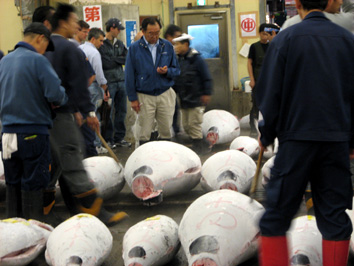|
TABLE OF
CONTENTS
 Home Page
Home Page
 My Bio
My Bio
 "Comparative
Global Cities Project"
"Comparative
Global Cities Project"
 Tokyo
Tokyo
 Ho Chi Minh City
Ho Chi Minh City
 Myanmar
Myanmar
 Cairo
Cairo
 Istanbul
Istanbul
|
Crossing the Globe: -- Global
Cities Compared and Contrasted
Tokyo and Istanbul
By Paul
Padegimas
 
Global cities are those which
are not only large
but are interconnected with the rest of the world.
These cities are interconnected in a cultural and economic
sense, as well as with the media and
politics. Global
cities are essentially intertwined with each other; while able to
function completely on their own, they draw on other global cities in
order to create at least a part of the city’s atmosphere.
This is the transnational aspect of global cities. The transnational is the global aspect of the
city. This aspect is easy to see in most
cities, for example New York
City. Walking
through Times Square, it is almost
impossible not to notice the international companies represented in all
of the signs, the international restaurants, even the people standing
on street corners pleading with you to listen to them about events
going on in other countries. The
transnational aspect of a city is generally very apparent in certain
areas, while much of the city must be examined a little bit closer to
see it.
Global cities exist all over
the world, and are centers of commerce and culture wherever they are
located. This draws people from outside to
the city, which leads to the growth of the vernacular aspect of the
city. The vernacular is the exhibition of
local culture throughout the city. The
vernacular aspect is what differentiates different global cities from
each other, more so than geography does. Think
about how New York City would be
different from Tokyo
without hot dog and roasted nut vendors on every corner and amateur
rappers trying to sell you their demo albums while you walk down the
street? What about San
Francisco and Istanbul? Language aside, these are the kind of things
that truly define an individual city, while the transnational aspects
are what truly make them global. In this
essay, the cities of Istanbul and Tokyo will be
explored. Based off of two previous
shorter essays, the transnational and vernacular will be compared and
contrasted to show how global cities from different sides of the world
can be very similar yet different, reflecting their own character.
First read
about each city, and then come back for my analysis:
Analysis
As far as the transnational, both of these cities have all
of the signs. International restaurants
and hotels are abundant. Advertisements
for products of other nations can be seen everywhere.
If shopping is what you crave, catching a taxi to Taksim Square
provides an incredible selection of shops from international companies. Taksim
Square is very similar to the Ginza district
in Tokyo
in the sense that it caters very much to tourism and international
culture with restaurants and shops and nightlife. From
my experiences in both cities, Taksim Square and Ginza are
incredibly similar, with Ginza being a little larger simply because of
the larger scale of Tokyo
as a whole. The architecture is also
somewhat different; with Ginza presenting itself more in the form of
high rise buildings, mainly due to the fact that in Tokyo,
and Japan
as a whole, there are more constraints on space. With
space at a premium in Tokyo,
construction is forced to go up rather than out, whereas Istanbul is not
so focused on the vertical but is an expansive city with its share of
skyscrapers, but more growth horizontally.
As far as the vernacular, a main feature of both cities is
the focus on the water. The people of both
cities are heavily involved with what the water around them can do for
their cities as one of their richest resources. The
sea is one of the main sources of food for both, with the fishing
culture being a main focus. The difference
is that in Istanbul,
if you were to walk around the waterline, you could find people fishing
at any time of day or night. There were
always people fishing, on the piers, the rocks, from bridges, it didn’t
matter. Anywhere that was available,
people would fish. This led me to believe,
along with the smaller scale of the fish markets in Istanbul,
that small scale is much more emphasized in Istanbul
than in Tokyo. This makes sense to me, partially because of
the incredibly developed waterline in Tokyo,
as well as because of the much larger population of Tokyo which is
consuming the fish from these markets.
In the end, by just examining a few aspects of a city it
is easy to tell that both are certainly very much global cities,
containing all of the requirements to be considered truly international. At the same time, these cities each have
distinct vernacular cultures which distinguish them from one another. Given that the topics in the vernacular explored
in each were similar, one can tell that there are certainly differences
which reflect the character of the individual city.
Overall, these cities reflect many transnational features
which tie them together, while each city is distinguished from other
global cities by parts of the vernacular culture which, upon
examination, are intertwined throughout everyday life in the city.
|